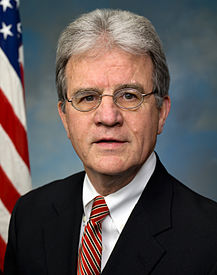Florida Reps. Mario Diaz-Balart, Bill Young, Ileana Ros-Lehtinen, Ander Crenshaw, Vern Buchanan cave
History will mark this day as the death of the Republican Party as they caved on their core principles. The Republican ideals of smaller government, lower taxes and less spending are now officially history.
Future generations will look back on this day as the end of the Party of Lincoln and the beginning of the end of the republic.
Republicans, Democrats and President Obama are all now on the same page. There is less than one degree of separation between the parties. Tax, spend and borrow are the new mantras. All of the political posturing during the holidays was a joke on the American taxpayers, especially those making over $250,000.
Big government is the “new-normal” inside the beltway.
The Washington Times reports that the “fiscal cliff” deal that was designed to save money actually includes $330.3 billion in new spending over the next decade, according to the official estimate the Congressional Budget Office released Tuesday afternoon.
CBO said the bill contains about $25.1 billion in new cuts, but those are swamped by the new spending on extended unemployment benefits for the long-term jobless and other new refundable tax credits that President Obama fought for.
Of those cuts, only $2 billion are scheduled to take effect in 2013. All told, the bill deepens the deficit by nearly $4 trillion over the next decade, when the new tax cuts and spending are combined.
According to the Heritage Foundation, “In addition to tax increases on Americans making more than $250,000 a year, the bipartisan deal will actually raise taxes on the vast majority of American workers. How? The payroll tax ‘holiday’ has ended. The Wall Street Journal calculates that the ‘typical U.S. family earning $50,000 a year’ will lose ‘an annual income boost of $1,000‘.”
Republicans and Democrats have perfected the art of compromise, which is the art of losing our unalienable rights slowly. Nothing has changed except the date certain of the financial collapse of the United States. As Senator Marco Rubio stated, “This deal just postpones the inevitable.”
As of January 2, 2012, the United States officially has what is in effect a one party system. Republicans and Democrats alike are fundamentally progressives with the same core principle – government is the solution, not the problem. The big loser is the American dream.
Pax Americana is dead.
UPDATE:
Representative Buchanan sent the below statement via email to constituents about his vote:
I wanted to let you know about the bipartisan vote in Congress last night to keep the country from falling off the fiscal cliff. I was one of 85 Republicans to support this compromise legislation, which now goes to the President for his signature.
This legislation reduced taxes for 99 percent of American taxpayers and ensures that seniors on Medicare can continue to see the doctor of their choice. While the legislation is not perfect (it does nothing to address out-of-control spending), we could not allow gridlock to push the nation off the fiscal cliff and risk an economic meltdown.
It is my expectation that the spending issue will be addressed by Congress in the next 60 days.
Please let me know what you think of last night’s passage of the bipartisan “American Taxpayer Relief Act”.
Vern




 Rick Maze, staff writer for the
Rick Maze, staff writer for the

 Lee F. Kichen, Sarasota County, Florida resident and Chairman of the Legislative Committee of
Lee F. Kichen, Sarasota County, Florida resident and Chairman of the Legislative Committee of 